Abstract
Matching theory is a mathematical theory of choice behavior, parts of which have been shown to hold in natural human environments and to have important therapeutic applications. Two modern developments in matching theory are discussed in this article. The first is the mathematical description of behavior in asymmetrical choice situations, which are situations where different reinforcers and/or different behaviors are associated with concurrently available response alternatives. Most choice situations in natural human environments are probably asymmetrical. The second development in matching theory is the mathematical description of a tendency toward indifferent responding in all choice situations. Behavior in asymmetrical choice situations and the tendency toward indifferent responding in all choice situations can be described by modifications of the matching equations, which change the equations from lines into power functions. These modern forms have been extraordinarily successful in describing behavior in choice situations, and are the forms most likely to accurately describe human behavior in naturally occurring environments.
Keywords: choice behavior, applied science, mathematical theory, asymmetrical situations, natural environments
Full text
PDF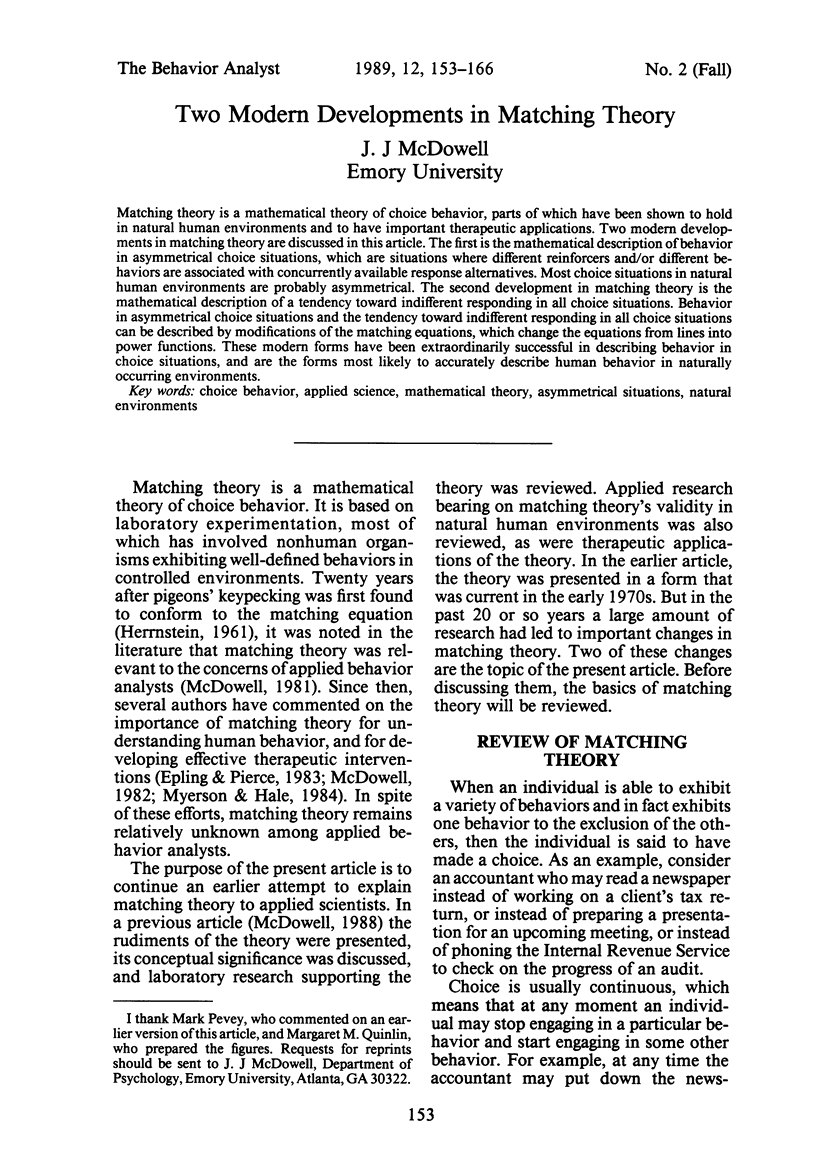
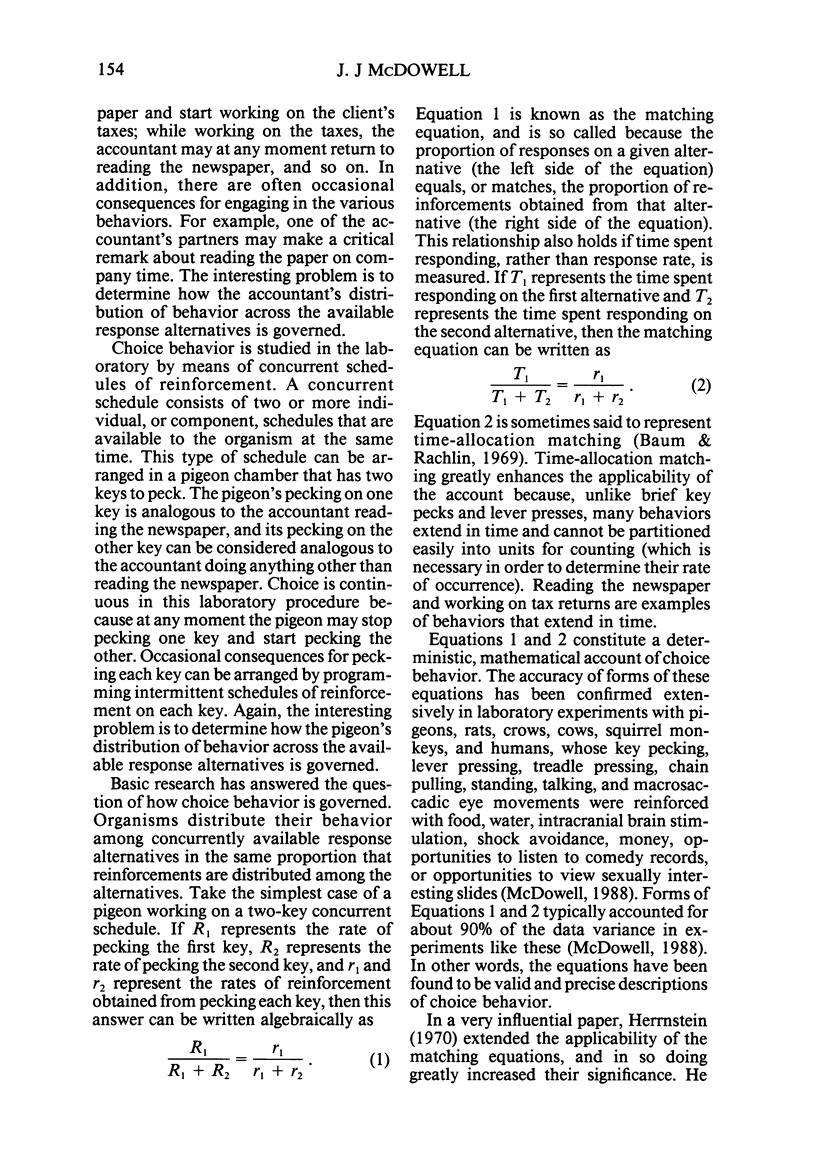
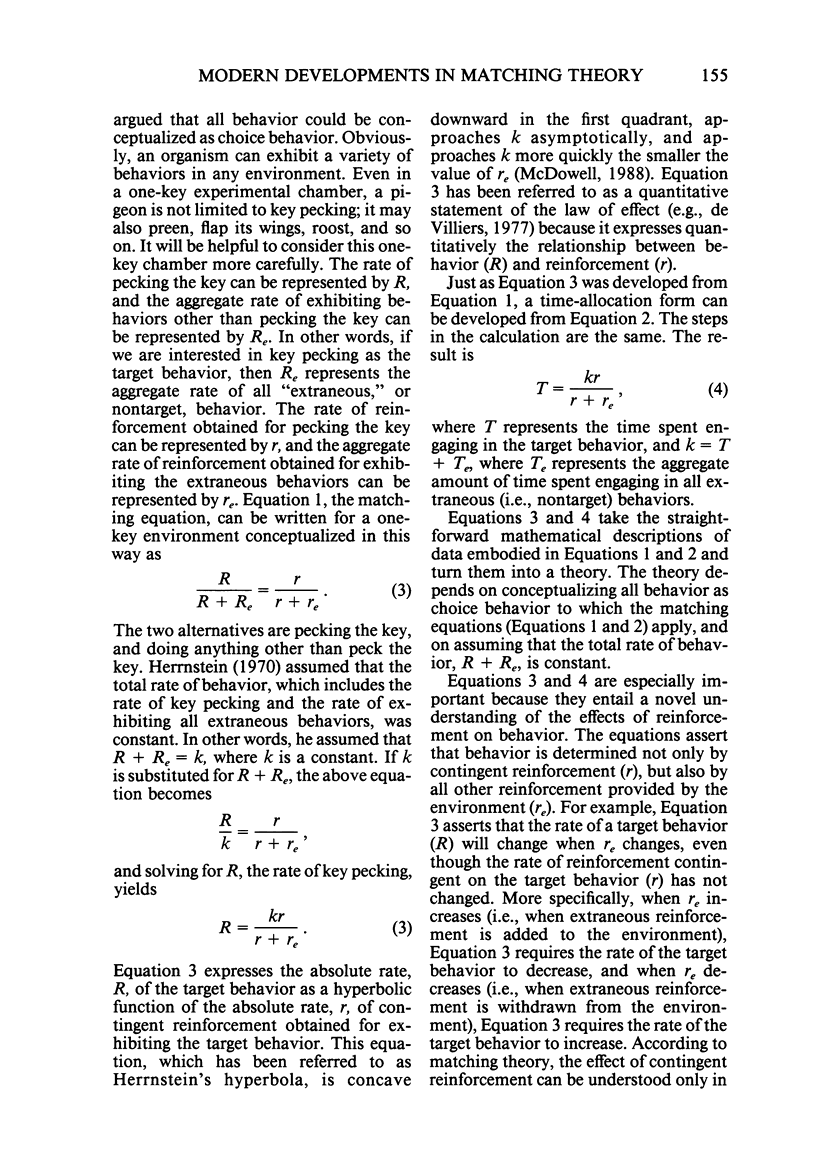
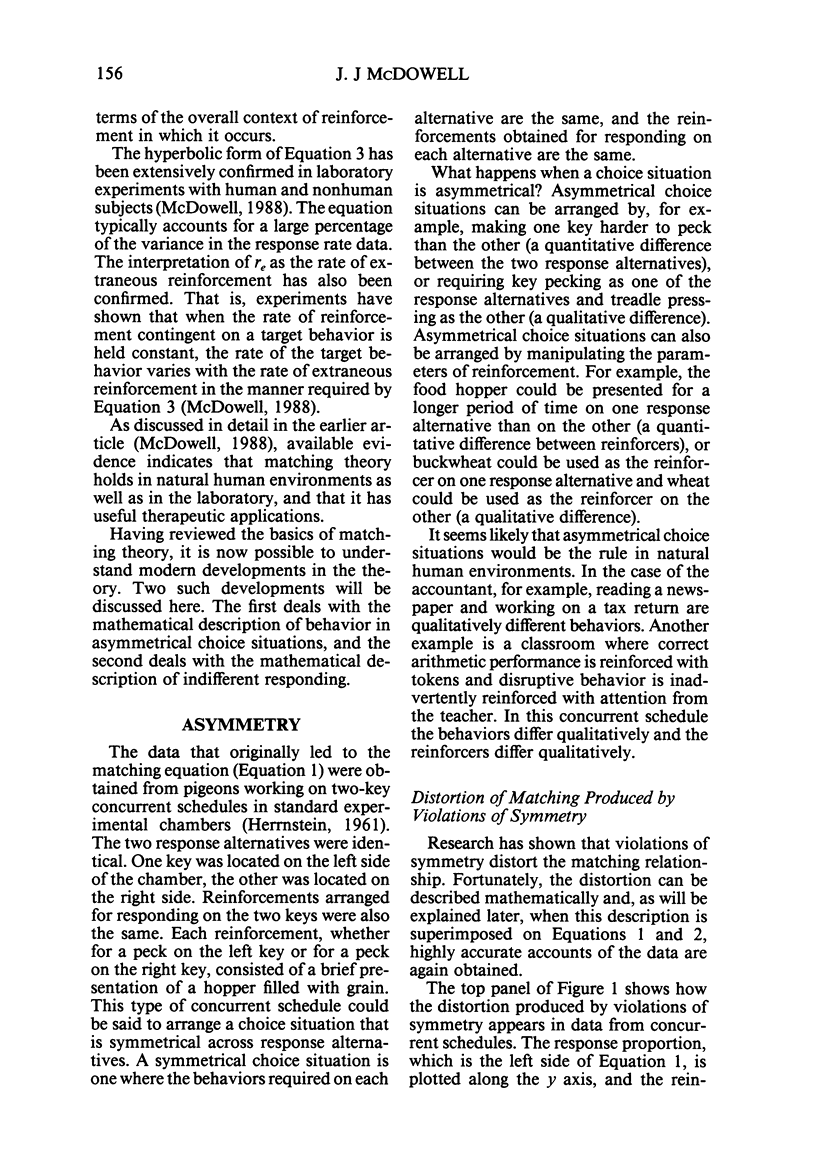
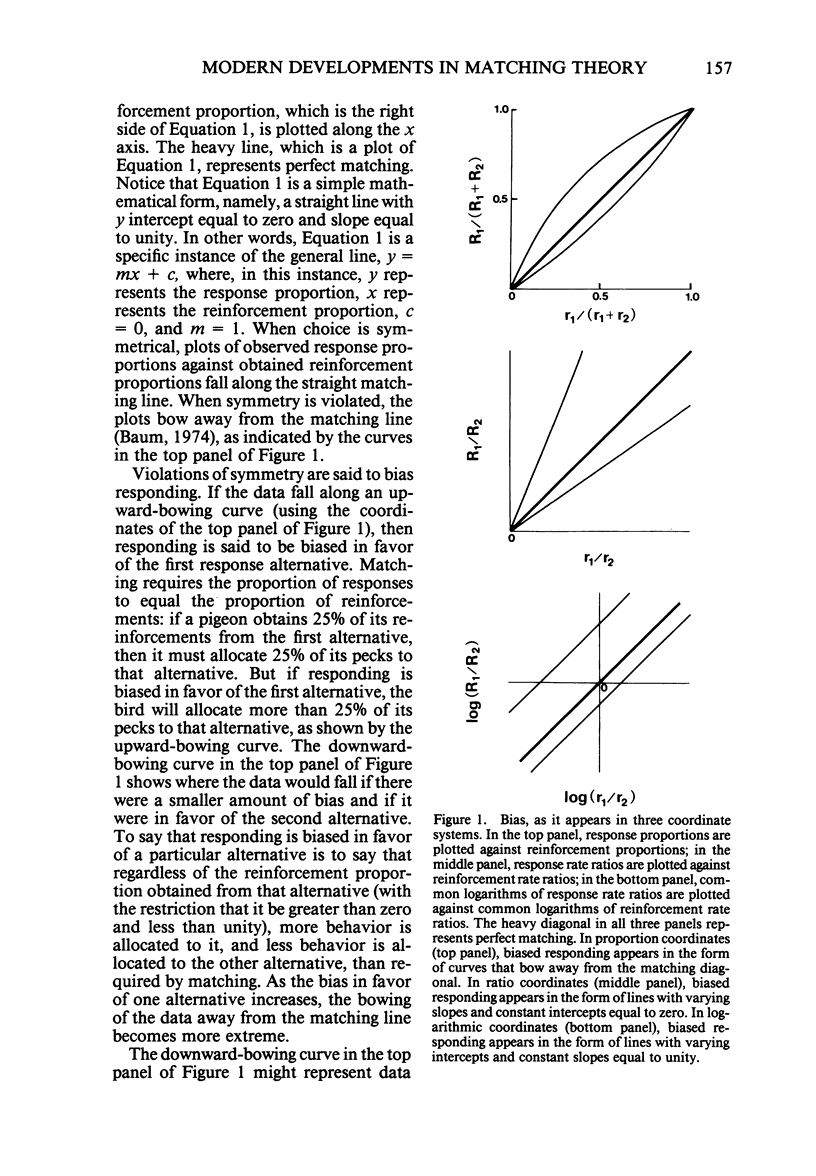
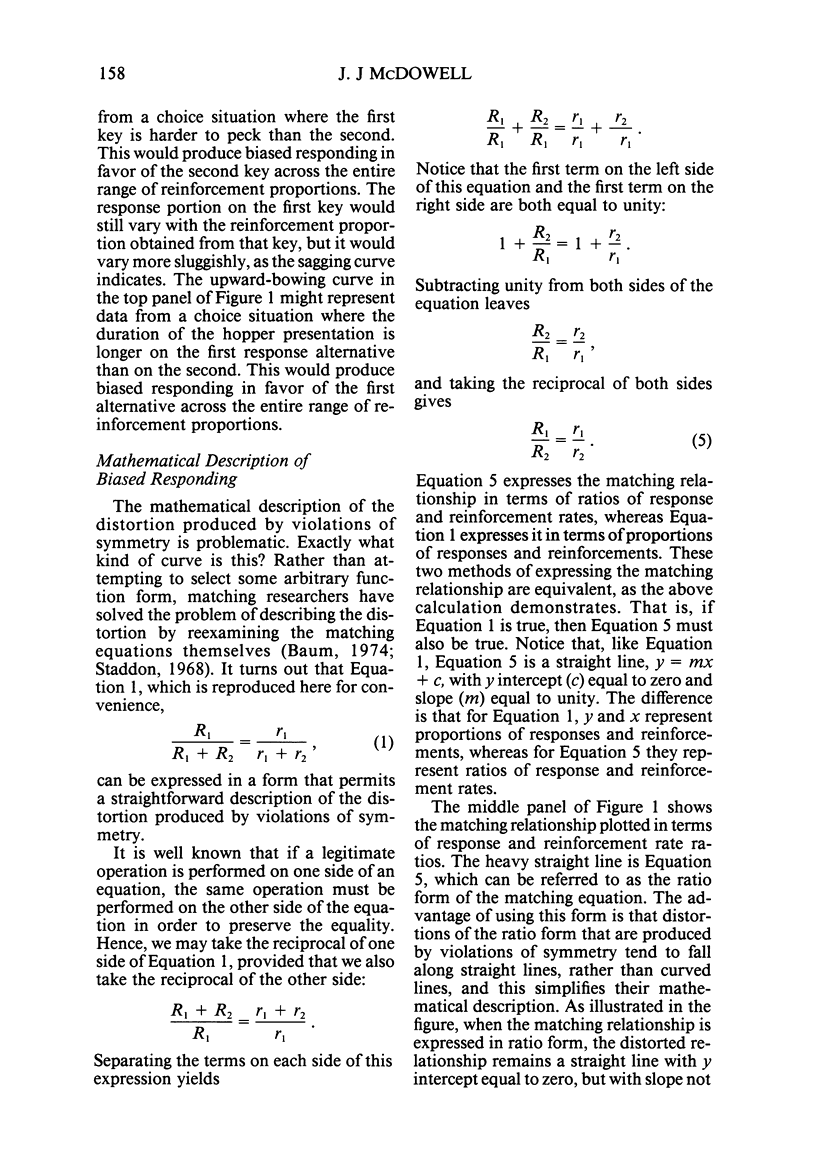
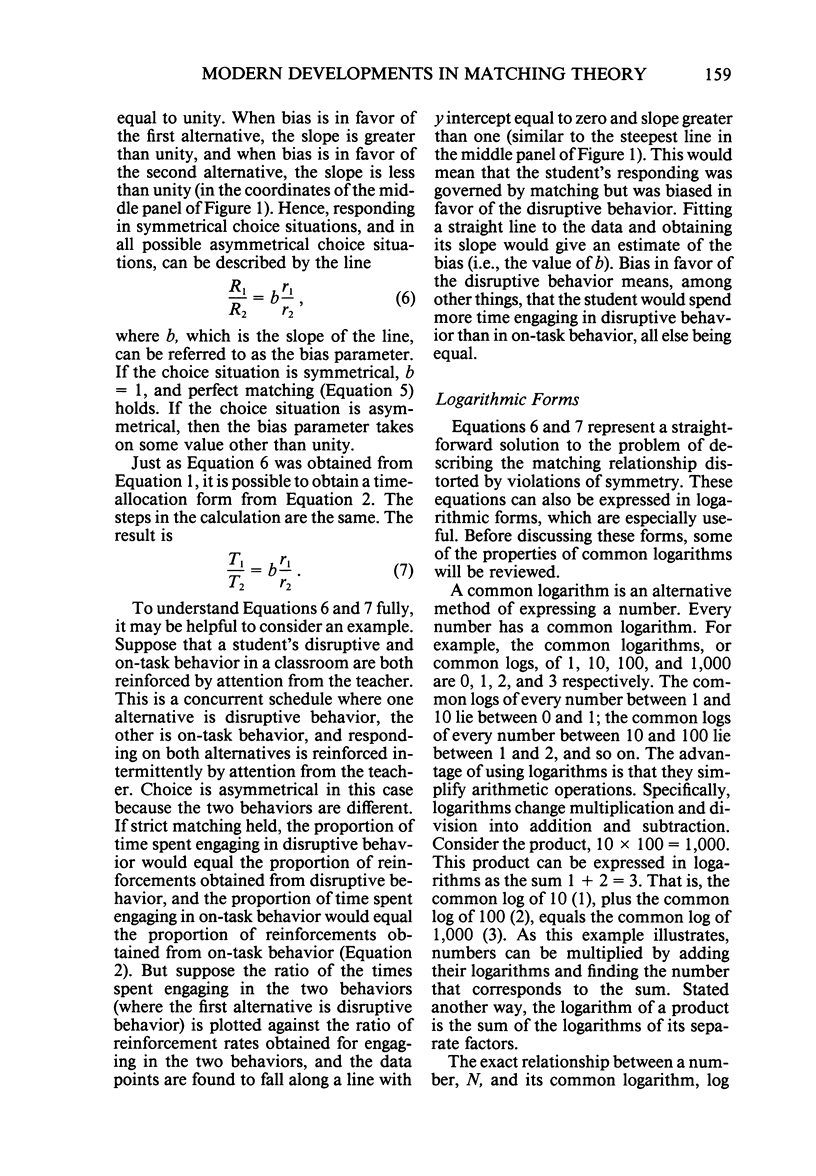
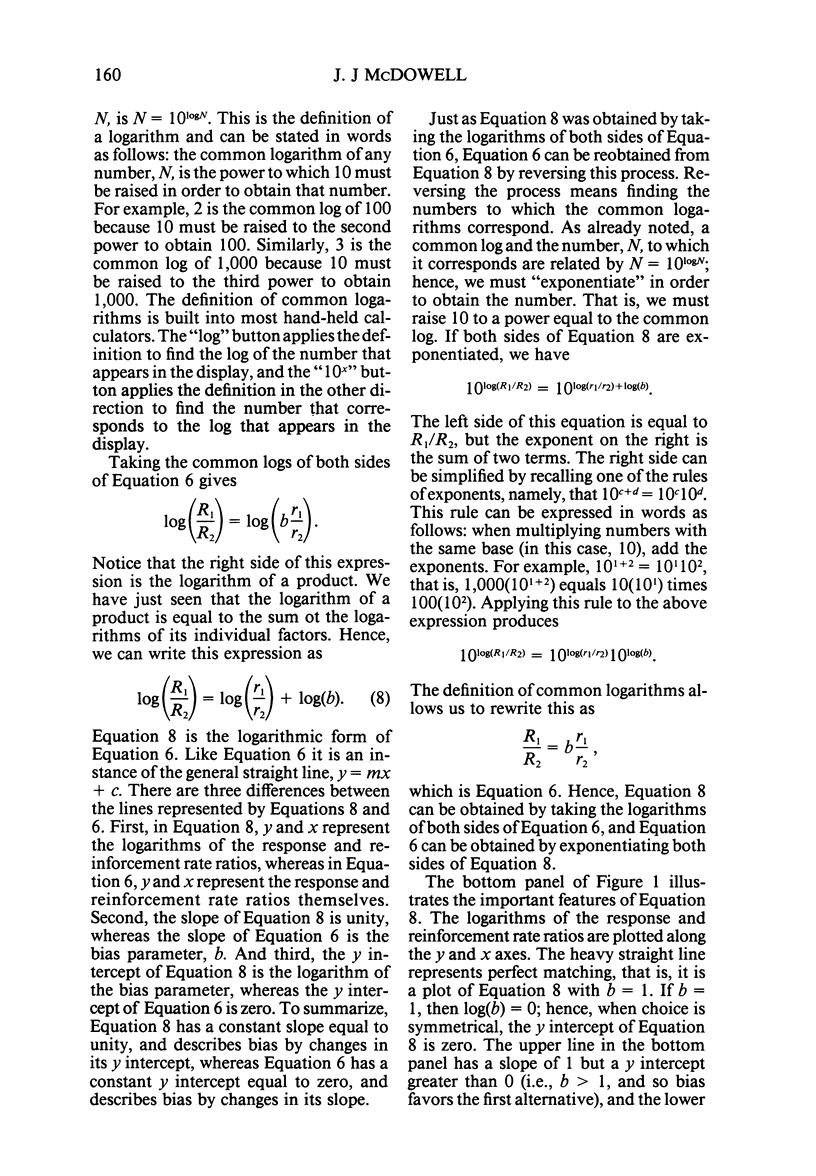
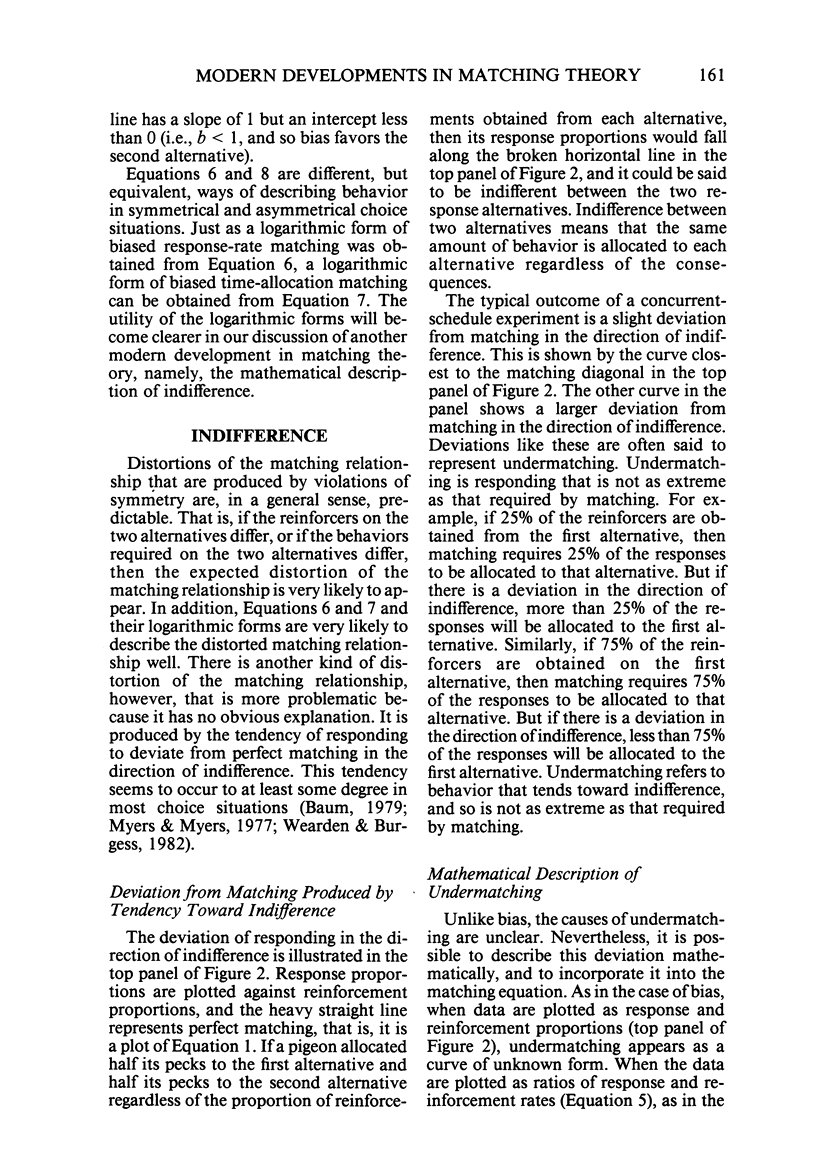
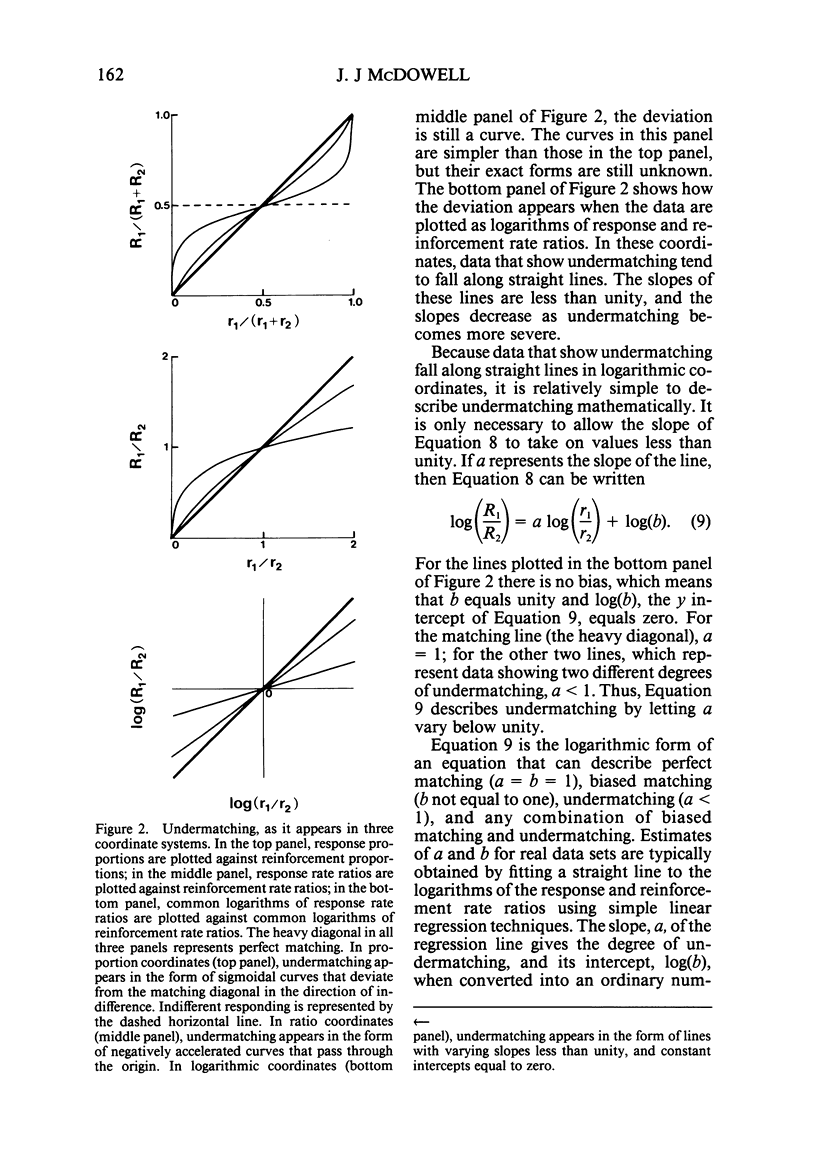
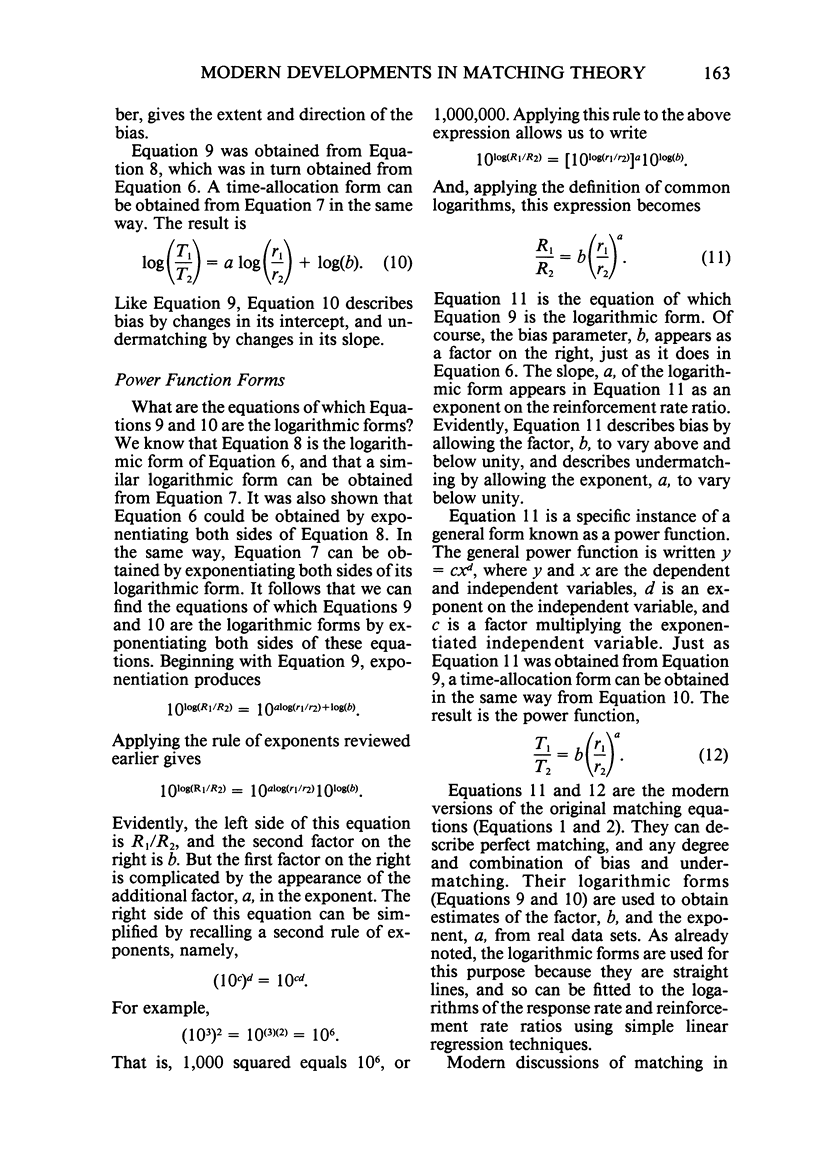
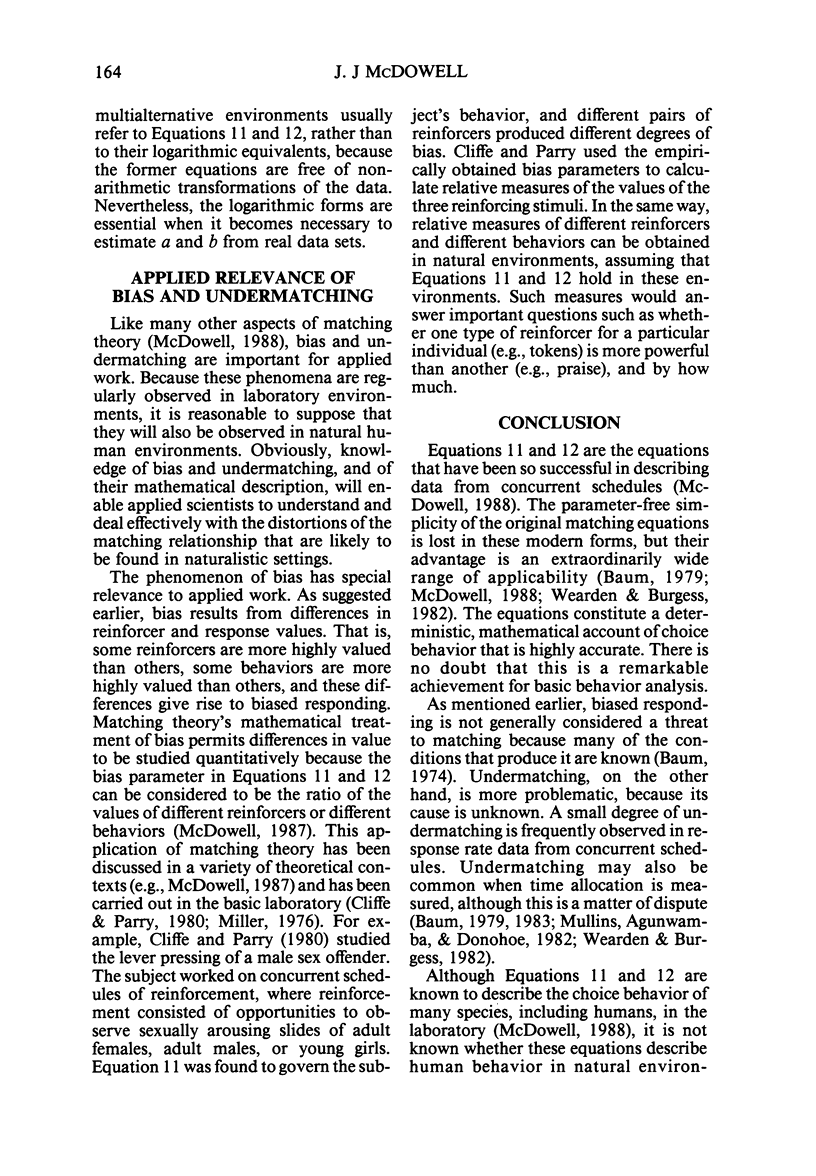

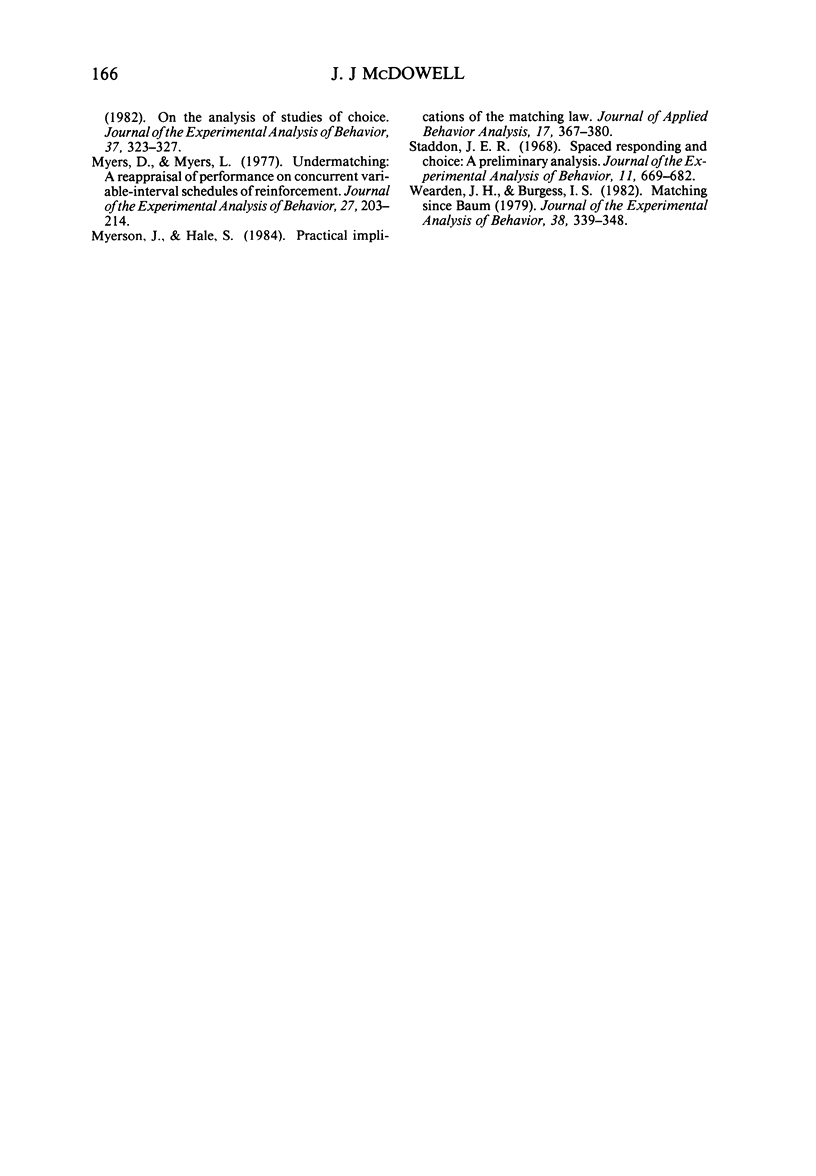
Selected References
These references are in PubMed. This may not be the complete list of references from this article.
- Baum W. M. Matching, statistics, and common sense. J Exp Anal Behav. 1983 May;39(3):499–501. doi: 10.1901/jeab.1983.39-499. [DOI] [PMC free article] [PubMed] [Google Scholar]
- Baum W. M. Matching, undermatching, and overmatching in studies of choice. J Exp Anal Behav. 1979 Sep;32(2):269–281. doi: 10.1901/jeab.1979.32-269. [DOI] [PMC free article] [PubMed] [Google Scholar]
- Baum W. M. On two types of deviation from the matching law: bias and undermatching. J Exp Anal Behav. 1974 Jul;22(1):231–242. doi: 10.1901/jeab.1974.22-231. [DOI] [PMC free article] [PubMed] [Google Scholar]
- Baum W. M., Rachlin H. C. Choice as time allocation. J Exp Anal Behav. 1969 Nov;12(6):861–874. doi: 10.1901/jeab.1969.12-861. [DOI] [PMC free article] [PubMed] [Google Scholar]
- Cliffe M. J., Parry S. J. Matching to reinforcer value: human concurrent variable-interval performance. Q J Exp Psychol. 1980 Nov;32(4):557–570. doi: 10.1080/14640748008401845. [DOI] [PubMed] [Google Scholar]
- Epling W. F., Pierce W. D. Applied behavior analysis: New directions from the laboratory. Behav Anal. 1983 Spring;6(1):27–37. doi: 10.1007/BF03391871. [DOI] [PMC free article] [PubMed] [Google Scholar]
- HERRNSTEIN R. J. Relative and absolute strength of response as a function of frequency of reinforcement. J Exp Anal Behav. 1961 Jul;4:267–272. doi: 10.1901/jeab.1961.4-267. [DOI] [PMC free article] [PubMed] [Google Scholar]
- Martens B. K., Houk J. L. The application of Herrnstein's law of effect to disruptive and on-task behavior of a retarded adolescent girl. J Exp Anal Behav. 1989 Jan;51(1):17–27. doi: 10.1901/jeab.1989.51-17. [DOI] [PMC free article] [PubMed] [Google Scholar]
- McDowell J. J. Matching theory in natural human environments. Behav Anal. 1988 Fall;11(2):95–109. doi: 10.1007/BF03392462. [DOI] [PMC free article] [PubMed] [Google Scholar]
- McDowell J. J. On the falsifiability of matching theory. J Exp Anal Behav. 1986 Jan;45(1):63–74. doi: 10.1901/jeab.1986.45-63. [DOI] [PMC free article] [PubMed] [Google Scholar]
- McDowell J. J. The importance of Herrnstein's mathematical statement of the law of effect for behavior therapy. Am Psychol. 1982 Jul;37(7):771–779. doi: 10.1037//0003-066x.37.7.771. [DOI] [PubMed] [Google Scholar]
- McDowell J. J., Wixted J. T. The linear system theory's account of behavior maintained by variable-ratio schedules. J Exp Anal Behav. 1988 Jan;49(1):143–169. doi: 10.1901/jeab.1988.49-143. [DOI] [PMC free article] [PubMed] [Google Scholar]
- McDowell J. J., Wood H. M. Confirmation of linear system theory prediction: Changes in Herrnstein's k as a function of changes in reinforcer magnitude. J Exp Anal Behav. 1984 Mar;41(2):183–192. doi: 10.1901/jeab.1984.41-183. [DOI] [PMC free article] [PubMed] [Google Scholar]
- McDowell J. J., Wood H. M. Confirmation of linear system theory prediction: Rate of change of Herrnstein's kappa as a function of response-force requirement. J Exp Anal Behav. 1985 Jan;43(1):61–73. doi: 10.1901/jeab.1985.43-61. [DOI] [PMC free article] [PubMed] [Google Scholar]
- Miller H. L. Matching-based hedonic scaling in the pigeon. J Exp Anal Behav. 1976 Nov;26(3):335–347. doi: 10.1901/jeab.1976.26-335. [DOI] [PMC free article] [PubMed] [Google Scholar]
- Myers D. L., Myers L. E. Undermatching: a reappraisal of performance on concurrent variable-interval schedules of reinforcement. J Exp Anal Behav. 1977 Jan;27(1):203–214. doi: 10.1901/jeab.1977.27-203. [DOI] [PMC free article] [PubMed] [Google Scholar]
- Myerson J., Hale S. Practical implications of the matching law. J Appl Behav Anal. 1984 Fall;17(3):367–380. doi: 10.1901/jaba.1984.17-367. [DOI] [PMC free article] [PubMed] [Google Scholar]
- Staddon J. E. Spaced responding and choice: a preliminary analysis. J Exp Anal Behav. 1968 Nov;11(6):669–682. doi: 10.1901/jeab.1968.11-669. [DOI] [PMC free article] [PubMed] [Google Scholar]
- Wearden J. H., Burgess I. S. Matching since Baum (1979). J Exp Anal Behav. 1982 Nov;38(3):339–348. doi: 10.1901/jeab.1982.38-339. [DOI] [PMC free article] [PubMed] [Google Scholar]


